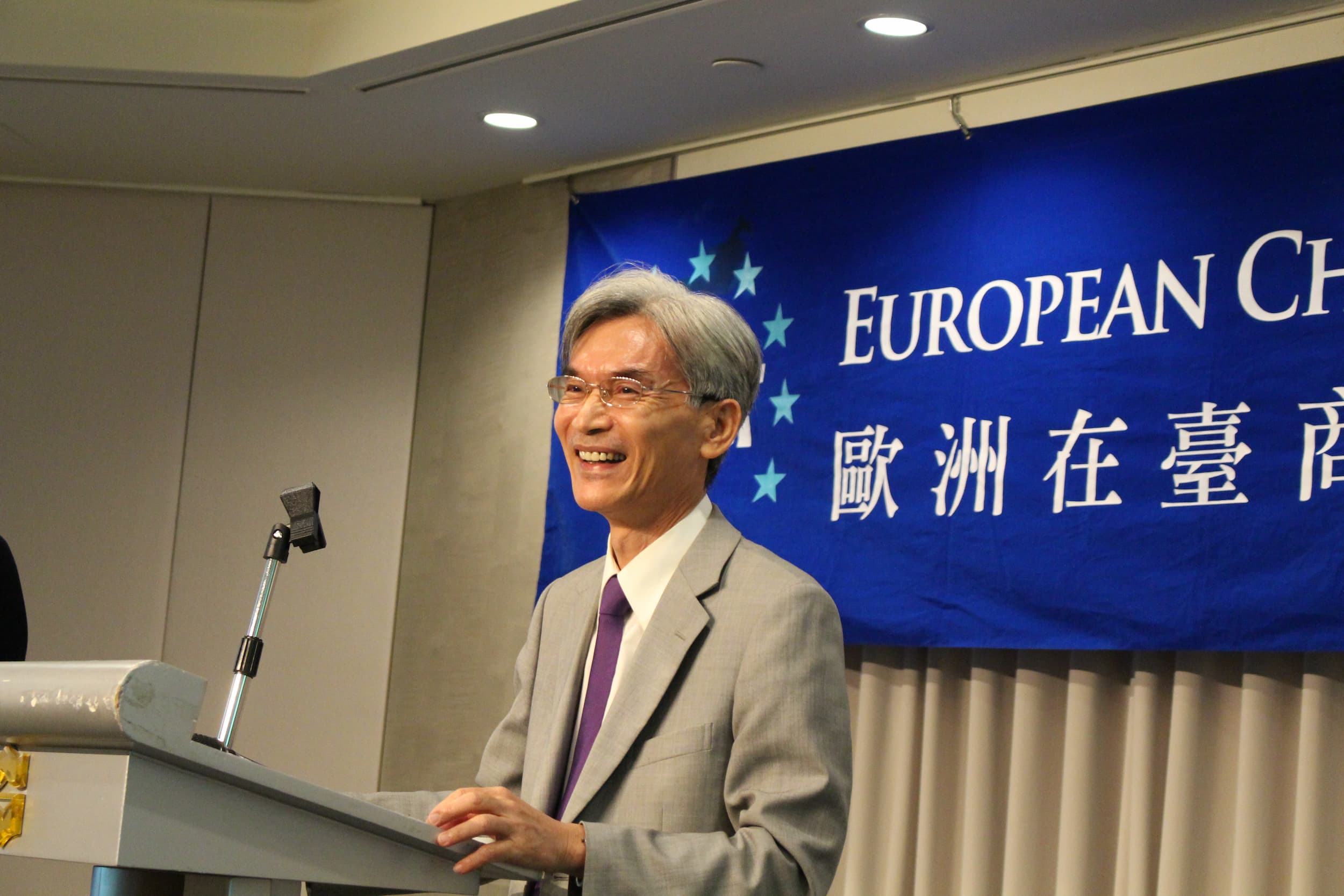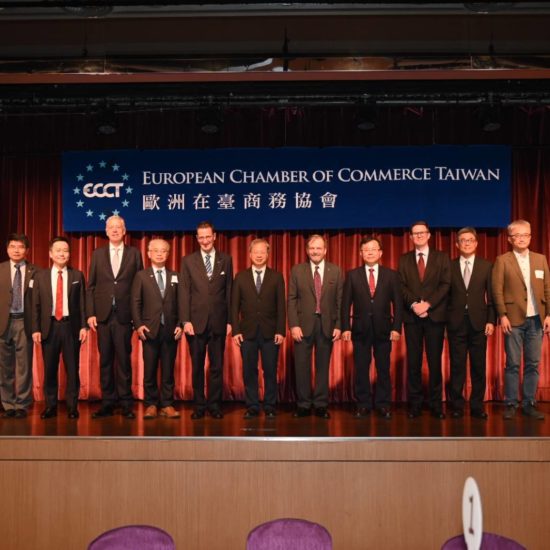Lunch with MOENV Minister Shieu

The ECCT hosted a Premium Event lunch featuring Dr Shieu Fuh-Sheng, Minister of the Ministry of Environment (MOENV). The guest speaker gave a presentation on the topic “Taiwan’s Policies for net zero and resource circulation”.
The minister explained that his knowledge of and experience in material science would serve the ministry well given how important it will be in the future to make the best use of materials and to preserve natural resources. This ties in well with one of the missions of the MOENV (recently upgraded from the Environmental Protection Administration), which is to manage the use of resources and chemical substances, in addition to responding to climate change, achieving net-zero emissions by 2050, reducing air pollution and shifting focus from pollution control to prevention and management.
Shieu noted that National Chung Hsing University, where he was previously the president and dean (and is still a professor), was the first university in Taiwan to establish a circular economy academy. But getting to a circular economy will require a lot of changes, starting with educating people and businesses on the benefits of shifting from a linear to a circular economy.
Following its upgrade from the EPA, the MOENV now has a staff of around 1,000. It has been restructured into four subordinate agencies, namely the Climate Change Administration, Resource Circulation Administration, Chemicals Administration and Environmental Management Administration, and one subordinate institution, the National Environmental Research Academy. It has five implementation units for Comprehensive Planning, Environmental Protection, Atmospheric Environment, Water Quality Protection and Monitoring and Information.
Within the Climate Change Administration, there are five divisions with the following functions:
- Net Zero Emissions Division: Coordination of the National Climate Change Action Guidelines and greenhouse gas-related action plans.
- Emissions Management Division: Monitoring of greenhouse gas emission sources and implementing carbon footprint verification and management.
- Emissions Reduction and Trading Division: Supervising laws and regulations for voluntary greenhouse gas reduction projects.
- Adaptation and Resilience Division: Promotion of climate change adaptation policies, regulations, action projects, and action plans.
- Carbon Fee Promotion Division: Implementation of carbon fee collection policies, systems, and regulations.
Greenhouse gas emissions will be reduced in phases with goals set for every five years according to the Greenhouse Gas Reduction and Management Act. According to statistics cited by Shieu, Taiwan’s emissions peaked in 2007 and have declined slightly since then. Although there was an uptick in emissions in 2021 due to the booming demand for manufactured products during the pandemic, emissions dropped again in 2022.
Through 12 key strategies, plans are being drawn up to address all the major sources of emissions. Electricity emissions will be reduced by scaling up the percentage of renewables, developing new energy technologies, energy storage and upgrading the power grid. Besides wind and solar, the minister also cited great potential for developing geothermal and wave energy.
Transportation plans will aim to change travel behaviour, reduce demand for transportation and switch to electric vehicles. By 2030 all public buses, official vehicles and 30% of new cars and 35% of new scooters should be electric (and 100% of new cars and scooters should be EVs by 2040).
Industry plans aim to increase energy efficiency, switch to cleaner fuels, promote the circular economy and innovative technologies. This will include replacing outdated equipment, lights and air conditioning. By 2040, the aim is to introduce low carbon processes for steel making (using hydrogen energy).
In the building sector, plans will aim to improve exterior designs and the energy efficiency of the buildings and their appliances.
Carbon fee payments will be phased in in accordance with GHG emissions by direct and indirect emission sources (large emitters). The rate will be determined by the Fee Rate Review Committee, which is expected to be established by the end of this year, and reviewed periodically. Entities that propose voluntary reduction plans and effectively reduce GHG emissions to reach their targets will be given preferential rates. Entities subject to the carbon fee levy may deduct emissions using reduction credits. The GHG fund’s resources will be used exclusively for GHG emissions reductions and adaptation to climate change. Subsidies will be given to central industry competent authorities, special municipalities, counties and cities for implementation of GHG reductions. For example, industry parks will be able to get subsidies for electric vehicles. Reports on the fund’s usage will be publicized regularly.
In terms of EV infrastructure, the government will subsidize 400 public sites to improve power supply and install charging stations. Subsidies will also be provided to operators of electric buses (according to mileage and the number of passengers).
To improve waste management, new legislation (the Resource Circulation Promotion Act) will integrate the management spirit of Waste Disposal Act and Resource Recycling Act, in line with international management trends to pursue the maximization of resources and minimization of waste disposal, and to create a circular economy. The priority handling of waste resources is, in this order: reuse, recycle and energy recovery. Minister Shieu said that the new legislation is currently in the public consultation phase. He hopes that it will be finalised and passed into law next year.
In the Q&A session, the minister said that he wants the MOENV to shift focus from what was the EPA’s primarily function as a monitoring and auditing body that issues fines and other punishments to one that encourages all stakeholders (government, businesses and the general public) to take joint responsibility for protecting the environment and promoting sustainability.

